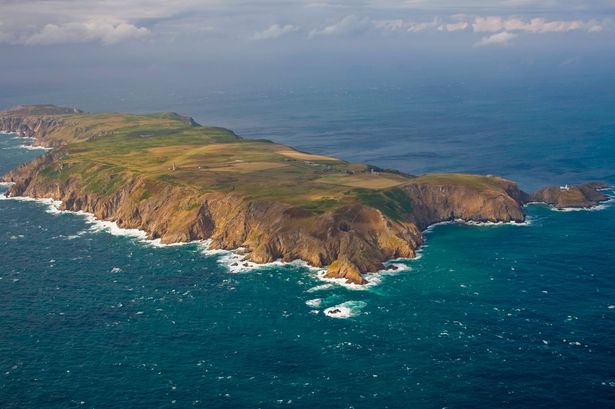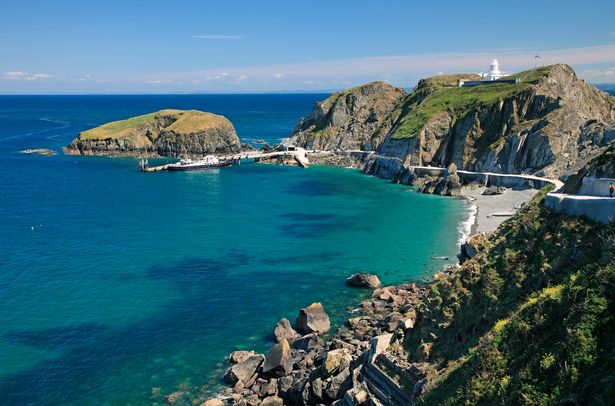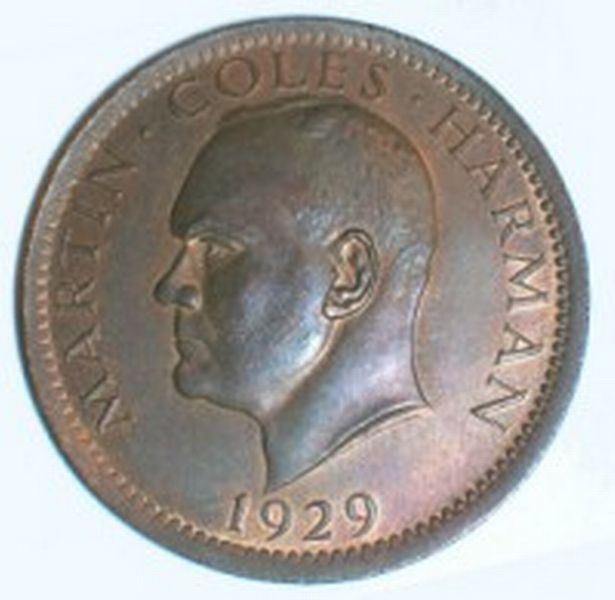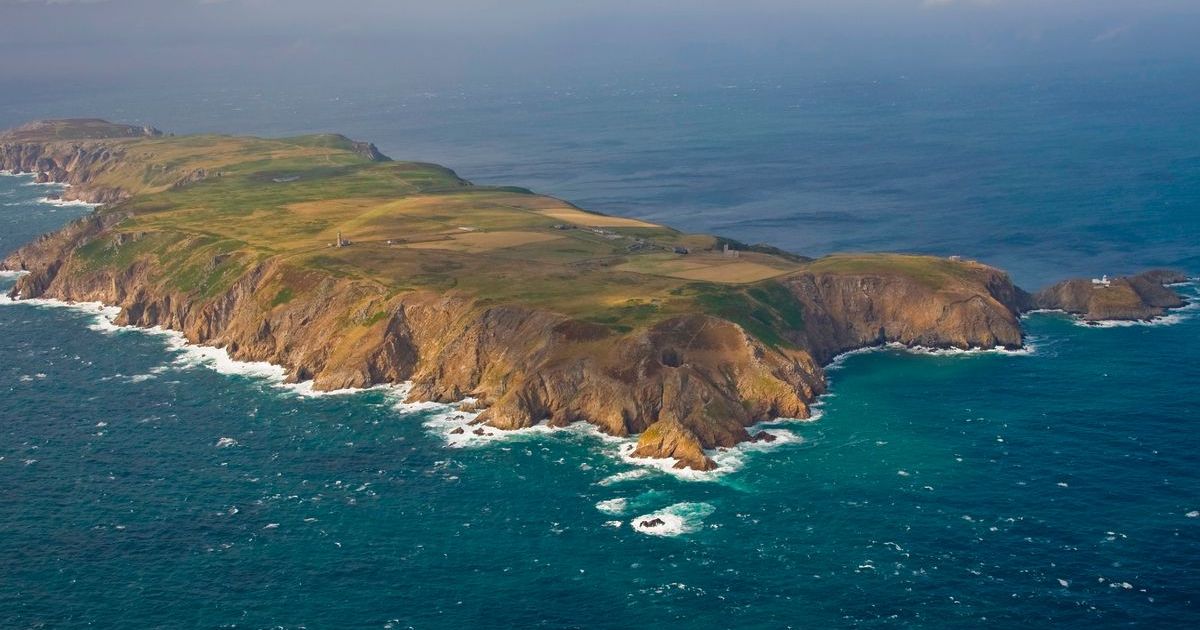“There are no televisions, radios or telephones and the electric supply is usually turned off between midnight and 6am” Lundy Island, based off the Devon coast
Lundy Island, based off the Devon coast
It was once a home for dangerous pirates on Bristol’s maritime doorstep, before centuries of lawless misrule by a series of bizarre characters. And now, the summer season is well and truly underway to give access to an island in the Bristol Channel that was named alongside some of the most stunning remote locations to visit in the world.
The restart of the summer ferry service from the Devon coast, which brings more than 20,000 day trippers each year, had to be postponed for a couple of days, but is now back up and running with a regular three-times-a-week service.
After another winter of hosting mainly birdwatchers who arrive by helicopter, life on Lundy is readjusting this month to its summer routine of a boatful of day trippers visiting on Saturdays, Tuesdays and Thursdays, with only the people staying in the 23 different holiday homes during the quieter rest of the week.
Read next: The bizarre story of the Bristol Channel island with its own ‘king’ and coins
Such is Lundy’s remoteness that the helicopter service, which provides a lifeline during the stormy winter months, can only take those who will be staying in one of the 23 very different and individual holiday lets on the island, and not the day visitors the ferry can.
The clamour to visit the island has not really waned since 2023 when Lundy, which is 87 miles as the seagull flies from Bristol, and 18 miles off the North Devon coast was name-checked by Global travel site Big 7. It specialises in featuring those incredible and relatively unknown locations around the world, and included Lundy high on its list of the 50 most remote and beautiful places in the world.
They said the list offered a unique and unforgettable experience for adventurous travellers, and it included the likes of the Okavango Delta in Botswana, the remote Corn Islands off the Caribbean coast of Nicaragua and stunning places no one has ever heard of from Antarctica to the South Pacific.
 Lundy Island(Image: Getty Images)
Lundy Island(Image: Getty Images)
“The world is full of amazing and remote places, some of which are challenging to reach,” said a spokesperson for Big 7. “These destinations offer a unique and unforgettable experience for adventurous travellers. These off-the-radar destinations were ranked on several factors, including remoteness, number of inhabitants, unspoiled beauty and uniqueness.”
And among all these exotic, remote and hard-to-reach places around the world, Lundy Island was listed in 16th place, above the Blue Nile Gorge in Ethiopia.
Getting to Lundy is not always guaranteed, as visitors will testify. The Oldenburg sails from either Bideford or Ilfracombe, depending on the tides. Sometimes it might sail from one and return to the other. Ferry tickets for 2025 are £97 for adults or £51 for children and £23 for infants under 4, with tickets on the helicopter almost twice that, at £174 for adults.
When visitors arrive, especially if they are staying, they find an incredible island steeped in the turbulent maritime history of the Bristol Channel.
“There are no televisions, radios or telephones and the electric supply is usually turned off between midnight and 6am,” said a spokesperson for the Landmark Trust, a conservation charity that leases the island from the National Trust.
“Living here, however briefly, offers our visitors a unique experience, one that can never be exactly repeated, no matter how often they return – and return they often do. There are 23 very individual self-catering properties available for short breaks and weekly holiday lets. There’s also a campsite, a pub, a church, a working farm, three lighthouses and about one thousand acres of unspoilt nature.
“The range of buildings in which to stay is extraordinarily diverse. Most have been adapted from their previous uses: there’s a 13th century castle, a late Georgian gentleman’s villa, a lighthouse, the isolated coastguard watchhouse of Tibbetts, a simple fisherman’s chalet,” he added.
Most are already pretty much fully booked for the 2025 season, even into November and December, long after the ferry has stopped sailing.
 Puffins stay close to their burrows among the cliff faces on Lundy island in the Bristol Channel(Image: PA)
Puffins stay close to their burrows among the cliff faces on Lundy island in the Bristol Channel(Image: PA)
Depending on the swinging pendulum of time, Lundy was very often a place of nightmares for generations of Bristol sailors, or an anarchic haven for those trying to get away from the law. Someone from Bristol finding themselves on Lundy during the course of the 1500s to the 1800s might have found themselves captured and enslaved by Barbary Pirates from Africa, shipped off to be sold at the slave market in Algiers. They could have signed up to whichever French, Basque, English or Spanish privateer pirate was in charge that day, for a life of piracy on the high seas, or they could have found themselves a forgotten prisoner, left to be the personal slave of the MP for Barnstaple.
Lundy’s history has never been dull. It’s position just far enough out to sea in the Bristol Channel, and at the centre of the shipping lanes that avoided the dangerous shingle banks nearer the coast meant for centuries it was an ideal lawless base for pirates. The various authorities from London might come and see off whoever had claimed as their castle, but as an unofficial fiefdom, law and order was never really completely established there until, remarkably, the 1960s.
After centuries of it being held occasionally by a family called the Mariscos, it was always hard for England to govern. In 1627, a group of Barbary Pirates hailing from the port of Sale in what is now Morocco landed there and set up a base. From there, they would mount raids into South Wales, the West Country and rural Ireland, invading fishing villages and capturing the residents. Lundy was their last bit of dry English land, before they were shipped off to the Algiers slave markets.
That lasted for years, until the English Civil War, and even into the 18th century, pirates were still rocking up on Lundy and using it as a base to plunder from the merchant ships heading in to Bristol laden with goods.
It wasn’t just Moroccan pirates that enslaved the local poor folk of the West Country – the West Country’s own upper classes did that too. Thomas Benson, the MP for Barnstaple, leased Lundy from the 1st Earl Gower in the 1740s and had a rather sick scam. He won a contract to transport the poor, destitute and convicted folk of Bristol and the rest of the West Country to work as bonded labour on the plantations of Virginia, took the money and those to be transported, but instead sent the ship to Lundy, where ship loads of convicts were set to work farming, on construction and as his personal slaves.
 Coins of Lundy Island
Coins of Lundy Island
A succession of eccentrics owned Lundy through the 18th and 19th centuries, culminating with Martin Harman, who bought Lundy in 1924 and promptly announced Lundy wasn’t part of England, and he was its king. He ended up being fined by the House of Lords for minting his own coins, but residents on Lundy still didn’t pay taxes, and had to go through customs when they arrived in Barnstaple.
Eventually, his son died in 1968 and the island was bought by Jack Hayward, the great philanthropist who saved the SS Great Britain two years later. He promptly gave the island to the National Trust, who leased it to the Landmark Trust, and it is now managed as a unique visitor attraction, especially for birdwatchers and those who want an authentic off-grid remote holiday.
